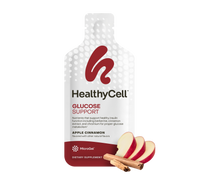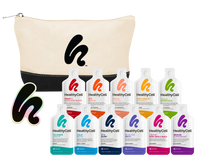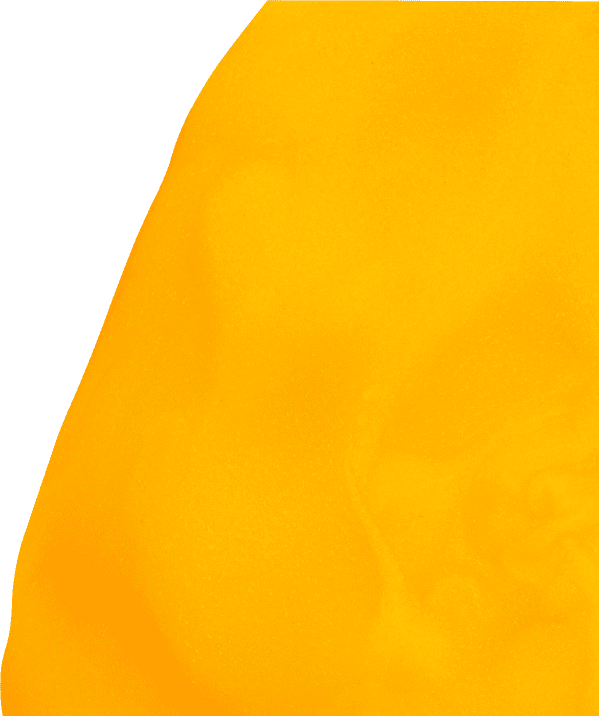High blood pressure is referred to as the silent killer because it is usually asymptomatic. However, uncontrolled high blood pressure can lead to serious medical conditions like kidney failure, heart attack, or stroke. If you're one of the 47% of adults in the United States who have been diagnosed with high blood pressure, it's important to work with your doctor to develop an effective treatment plan. The good news is that you can successfully lower your blood pressure by making simple lifestyle changes.
How do you know if you have high blood pressure?
Blood pressure is the force exerted against the walls of arteries as blood flows through the circulatory system. It's normal for your blood pressure to fluctuate throughout the day. However, if blood pressure remains high for an extended period, it can lead to serious medical conditions. Since high blood pressure usually doesn't present symptoms, most people find out they have high blood pressure after visiting their doctor. Blood pressure readings contain two numbers measured in millimeters of mercury (mmHg). The top number refers to systolic blood pressure or the pressure created when the heart contracts. The bottom number refers to diastolic blood pressure, which measures the pressure when the heart relaxes.
Your doctor will measure your blood pressure using a manual or digital monitor. A manual blood pressure monitor also referred to as a sphygmomanometer, is comprised of a cuff that inflates with air, a manometer (a gauge) that measures the pressure inside the cuff, and a stethoscope that a healthcare provider uses to listen to the sounds that the blood makes as it flows through the arteries. The rubber cuff wraps around the upper arm just above the elbow, where the brachial artery is located, and inflates with air. A healthcare provider uses a stethoscope to listen to your blood flow while the cuff slowly deflates.
Like a manual blood pressure monitor, a digital monitor uses an inflatable cuff that wraps around your upper arm and fills with air. After the cuff is fully inflated, it will slowly deflate, and your systolic and diastolic blood pressure will be automatically displayed on the screen.
How do you know if your blood pressure is high?
Below are some classifications of blood pressure readings:
- Normal: Less than 120/80 mmHg
- Elevated: Systolic pressure between 120-129 mmHg and diastolic pressure less than 80 mmHg
- Stage 1 hypertension: Systolic pressure between 130-139 mmHg or diastolic pressure between 80-89 mmHg
- Stage 2 hypertension: Systolic pressure of 140 mmHg or higher or diastolic pressure of 90 mmHg or higher
- Hypertensive crisis: Systolic pressure over 180 mmHg or diastolic pressure over 120 mmHg
What Should You Do If You've Been Diagnosed with High Blood Pressure?
If you have been diagnosed with high blood pressure, working closely with your healthcare provider to develop a treatment plan is important. Your healthcare provider will encourage you to make lifestyle changes, such as changing your diet and starting an exercise routine.
Below are 8 lifestyle changes you can make to lower your blood pressure:
1) Lose Weight
Losing even 5-10 pounds can help you significantly lower your blood pressure. It's also a great way to lower your cholesterol and triglyceride levels. A lot of research is being conducted to understand exactly how being overweight or obese can lead to high blood pressure, but it's clear that carrying around the extra pounds impacts your blood pressure. And research shows that the area where your fat is distributed matters. If you tend to carry weight primarily around your abdominal area, you have a higher risk of developing hypertension than someone who carries excess weight around the thighs. If you are obese, your risk of developing hypertension is very high. Findings from the Framingham Heart Study showed that 78% of primary high blood pressure in men and 65% in women can be attributed to obesity. By losing weight, you can lower your cholesterol, triglyceride levels, and blood pressure and decrease insulin levels.
2) Exercise
It goes without saying, but exercise is critical to weight loss. Even if you're not trying to lose weight, exercise is a great way to lower your blood pressure. Incorporating at least 150 minutes of moderate-intensity aerobic exercise per week can help you achieve your weight loss goals and lower your blood pressure. Activities to help you achieve your goals include walking, jogging, swimming, and cycling. Ideally, you should also incorporate resistance training 2-3 days per week. When you exercise, you strengthen the heart muscle and improve circulation, so the heart becomes more efficient at circulating blood throughout the body and doesn't need to work as hard.
Here are some of the benefits of exercise when it comes to cardiovascular health:
- It strengthens the heart muscle: The heart becomes more effective at pumping blood and delivering oxygen to the body's tissues, which lowers your risk of heart disease and improves overall heart health.
- Lowers blood pressure: Exercise can help lower blood pressure, a considerable risk factor for heart disease. Regular physical activity can help reduce the tension in blood vessels and improve blood flow, reducing your risk of heart disease and stroke.
- Improves cholesterol levels: Exercise can improve cholesterol levels by increasing high-density lipoprotein (HDL), or the good cholesterol, and reducing low-density lipoprotein LDL, or the bad cholesterol.
- Controls weight: Regular physical activity can help control weight too, which is vital for heart health as excess weight can increase the risk of heart disease and other health problems.
- Reduces stress: Exercise can reduce stress and improve mental health, positively impacting heart health. There are a number of ways that stress can raise blood pressure and increase your risk of developing heart disease, but the relationship is more complex than you might think. To learn more, check out: Can Stress Cause High Blood Pressure?
3) Consume A Healthy Diet
When it comes to following a heart-healthy diet to lower blood pressure, I recommend the DASH diet. DASH stands for Dietary Approaches to Stop Hypertension and it takes a holistic approach toward lowering blood pressure. The DASH diet emphasizes consuming fresh fruits, vegetables, whole grains, lean protein, and low- or non-fat dairy products. The DASH diet incorporates foods high in fiber, potassium, magnesium, and calcium, which have been shown to lower blood pressure. These minerals work in different ways by helping the body eliminate sodium, reduce tension on the walls of the blood vessels, lower inflammation, and improve overall vascular function. Along with lowering blood pressure, the DASH Diet can help lower your LDL, "the bad" cholesterol, since it helps you choose foods low in sodium and saturated fat.
It's long been understood that sodium, or salt, can impact blood pressure. If you have too much sodium and not enough potassium, your body will retain fluid. To maintain balance, your blood vessels will hold onto excess water to balance the high sodium concentration in your blood. However, this fluid retention increases blood pressure. Potassium plays an important role because it helps remove sodium from the blood and eases pressure on the walls of your blood vessels. Maintaining the right balance of potassium and sodium in the body is critical so your kidneys can effectively remove excess fluid. Eating the recommended servings of fruits and vegetables should help you meet your potassium goals. The American Heart Association recommends consuming five servings of vegetables and four servings of fruit daily. Many processed foods in the United States are loaded with sodium, and consumers are often unaware that even so-called healthy options at restaurants contain excess amounts of saturated fat and sodium. This is why cooking at home and avoiding highly processed foods is critical to lowering your blood pressure.
4) Choose A High-Quality Heart Health Supplement with Omega-3 Fatty Acids
Along with following a diet specifically aimed at lowering blood pressure, I recommend
incorporating supplements that contain heart-healthy ingredients, such as Omega 3s, magnesium, potassium, beetroot, and CoQ10. Healthycell makes a great Heart & Vascular Health supplement that contains plant extracts, vitamins, and minerals to help maintain normal cholesterol, triglyceride, and blood pressure levels for a healthy heart and vascular system. Most experts recommend getting omega-3s directly from seafood. Incorporating a lot of omega-3s into your diet directly from foods such as salmon, tuna, mackerel, herring, sardines, trout, and oysters is the preferred way to consume omega-3s. However, you can still get adequate omega-3 from ground flaxseed, chia seeds, brussels sprouts, spinach, or walnuts if you're not a seafood eater.
Since many people have trouble consuming adequate amounts of Omega-3s from their diet alone, incorporating a supplement, such as Healthycell's Heart Health supplement, is a great way to ensure you're consuming heart-healthy ingredients. This supplement contains Ahiflower as a plant-based source of Omega-3s, and as a bonus, it tastes great.
What I love the most about Healthycelll's supplements are that they are 100 percent bioavailable for optimal absorption.
The results of a double-blind, randomized, peer-reviewed crossover study published in Sage Journal comparing the absorption of Healthycell's MICROGEL™ technology to a standard tablet showed that Healthycell's MICROGEL™ resulted in:
- 165% more absorption
- 144% higher maximum nutrient level
Here is a list of ingredients you should look for in a heart health supplement. You can find all of these ingredients in Healthycell’s Heart & Vascular Health.
- Omega-3 fatty acids: Omega-3 fatty acids can help lower blood pressure, reduce inflammation, and improve cardiovascular health. I recommend a 250-500mg dose of EPA and DHA daily.
- Coenzyme Q10: Coenzyme Q10 is an antioxidant that can help protect the heart from damage. I recommend a dose of 30-200mg per day.
- Vitamin D: Vitamin D can improve heart health by reducing inflammation and helping regulate blood pressure. I recommend a dose of 1000-4000 IU per day.
- Magnesium: Magnesium helps regulate heart rhythm, blood pressure, and blood sugar levels. I recommend my patients take 400-1000mg per day.
- Folic acid: Folic acid can help reduce homocysteine levels, a risk factor for heart disease. I recommend a dose of 400-800mcg daily of methyl folate (not folic acid).
- Vitamin K2: Vitamin K2 helps maintain cardiovascular health by directing calcium to the bones, where needed, and away from the arteries, which can contribute to plaque buildup and increase the risk of heart disease. It also helps regulate the formation of blood clots, which can prevent blood clots and stroke. I recommend 100 mcg per day.
- Soluble Fiber: Soluble fiber can help lower LDL (the bad) blood cholesterol levels. It also confers other benefits, such as lowering blood pressure and inflammation.
To learn about the best supplements for lowering blood pressure, read Supplements To Lower Blood Pressure.
5) Reduce Stress
The relationship between chronic stress and high blood pressure is complex. Chronic stress is a long-term reaction to persistent life stressors such as chronic illness, financial hardships, and interpersonal conflict. While more research is necessary to understand the connection, studies show that stress alone does not cause hypertension. Instead, your behaviors in response to stress are what lead to hypertension. When you're stressed, you may turn to behaviors that provide temporary relief, but many of these behaviors can be harmful to your health. For example, people under chronic stress may drink too much alcohol or turn to highly processed foods loaded with sugar, sodium, and saturated fat. If you're chronically stressed, it's easy for these behaviors to become habits, leading to chronic health problems, such as high blood pressure.
If you're concerned about your blood pressure, it's important to eliminate significant sources of stress in your life. Learning healthy ways to cope with stress is just as crucial. By responding differently to stress, you can reduce adverse health outcomes. For ways to manage stress and lower blood pressure, check out: Can Stress Cause High Blood Pressure?
6) Limit Alcohol Use:
It's not exactly clear how alcohol raises your blood pressure, but there is a strong link between heavy drinking and hypertension. Many researchers believe the way alcohol stimulates your sympathetic nervous system, causing your blood vessels to narrow, is what leads to hypertension. Inflammation from alcohol may also make it difficult for your blood vessels to relax, which can also contribute to hypertension.
Below are some categories of drinking that can help you assess your risk.
- Binge drinking-Four or more drinks within two hours for women. Five or more drinks within two hours for men.
- Moderate drinking- No more than one drink a day for women. No more than two drinks a day for men.
- Heavy alcohol use- more than three drinks a day for women. More than four for men.
If you have high blood pressure, you should try to limit your alcohol consumption.
7) Track Your Blood Pressure
Many people are turning to at-home blood pressure monitors to help manage and keep track of their blood pressure between doctor's visits. There are many different types of blood pressure monitors, but I always recommend using a digital arm cuff monitor if you choose to monitor at home. If you want to use an at-home blood pressure monitor between doctor's visits, the American Heart Association recommends digital arm cuff blood pressure monitors.
Digital blood pressure monitors are automated, so you can get a blood pressure reading at home without the help of a trained healthcare provider. Like a manual blood pressure monitor, a digital monitor uses an inflatable cuff that wraps around your upper arm and fills with air. After the cuff is fully inflated, it will slowly deflate, and your systolic and diastolic blood pressure will be displayed on the screen. This typically takes about 30 seconds. Digital blood pressure monitors are the most reliable at-home digital blood pressure devices. If you decide to purchase a digital blood pressure monitor for yourself, I recommend finding one from a reputable company, such as Omron. Omron's Silver Blood Pressure Monitor with an upper arm cuff is one of their top sellers due to its user-friendly features and accuracy. The device can store up to 80 readings per user and has an advanced averaging feature that automatically shows you the average of the last three readings taken within 10 minutes. I also like that Omron's Silver Blood Pressure Monitor is registered with the FDA. Check out The Best Blood Pressure Monitors to learn more about my recommendations.
If you notice abnormal results, see a doctor. However, remember that small blood pressure changes throughout the day are normal. To learn more about normal versus abnormal fluctuations in blood pressure, read Is Blood Pressure Higher In The Morning?
8) Quit Smoking
Everyone knows that smoking is bad for your lungs. However, it's also a significant contributor to cardiovascular disease, and some research suggests it can cause hypertension. Smokers are up to 4 times more likely to develop heart disease than non-smokers, so quitting can reduce your risk of developing cardiovascular-related diseases. The nicotine in cigarettes raises your blood pressure and heart rate while narrowing the arteries. It does this by stimulating the release of epinephrine and norepinephrine, hormones that increase blood pressure. When you smoke a cigarette, there is an immediate rise in blood pressure, which is short-term. However, some evidence suggests that smoking can lead to sustained high blood pressure. And since nicotine is the main culprit, individuals who use a vape with nicotine pouches or any other form of nicotine are also at risk.
In Summary:
Hypertension often goes undetected, so it's important to get your blood pressure checked by a healthcare provider every time you go to the doctor. It's also important to keep up with your routine well visits. Untreated hypertension can result in kidney disease, heart attack, or stroke, but the good news is that you can significantly lower your blood pressure through lifestyle changes.
About the Author
Dr. Giampapa is a world-renowned medical doctor, inventor, and surgeon specializing in anti-aging medicine. He recently received a nomination for the Nobel Prize for his groundbreaking stem cell research, as well as the Edison Award for the Healthycell nutritional supplement for cell health. He was also awarded the A4M Science & Technology award for his development of the BioMarker Matrix Profile – the first computer program to measure aging.




